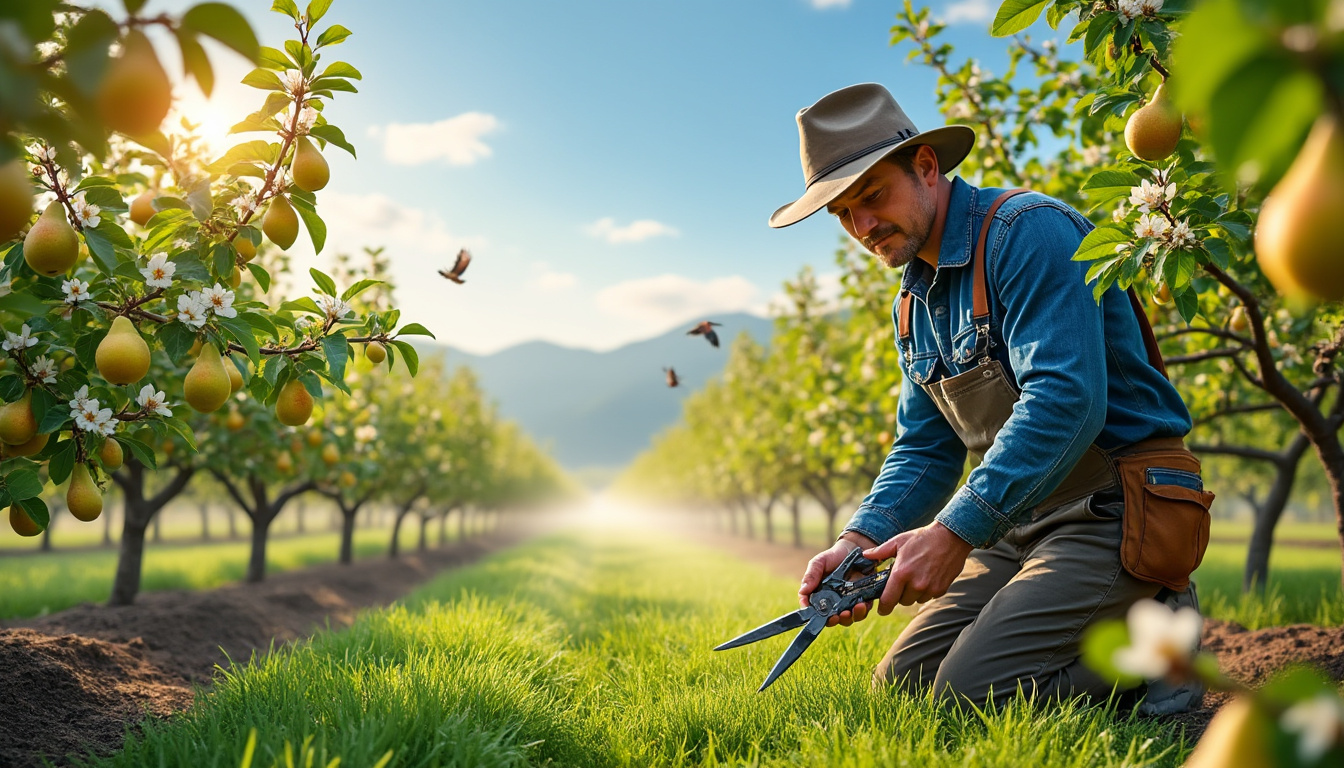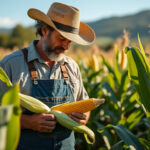Understanding the right time and method to prune pear trees can significantly impact their overall health and fruit production. Pruning is not merely a chore but an art that influences the vitality of your trees. A well-timed prune can lead to bountiful harvests, allowing the pear tree to flourish while maintaining its structural integrity. This guide will provide comprehensive insights into the ideal timing, essential techniques, and tools needed for optimal pear tree pruning, ensuring that your endeavors yield the healthiest and most fruitful trees possible.
As the seasons transition, many gardeners are faced with the question of when and how to prune their pear trees effectively. Proper pruning is crucial in maintaining a robust canopy, promoting better fruiting, and warding off disease and pests. In this article, we’ll explore the very best practices for maintaining your pear trees and ensuring they remain productive over the years.
Understanding the significance of pruning pear trees
Pruning is fundamental to the growth and health of your pear trees. By removing excess wood and encouraging air circulation, you allow sunlight to penetrate the tree’s canopy, which is vital for fruit development. Pruning not only boosts fruit yield but also keeps the tree well-structured and manageable. Below, we delve into some essential reasons why pruning is a necessary part of pear tree maintenance:
- 🌱 Enhances fruit production by improving light exposure.
- 🚀 Promotes overall tree health by removing dead or diseased wood.
- 🌳 Provides better airflow, thus preventing fungal diseases.
- 🛠️ Aids in shaping the tree, making harvesting easier.
The right tools for effective pruning
Before diving into the actual pruning process, it is essential to equip yourself with the proper tools. The right instruments will make your tasks easier and lead to more successful outcomes:
- 🔪 Secateurs: Perfect for small branches and delicate work.
- 🪄 Loppers: Ideal for medium-sized branches, offering leverage for cleaner cuts.
- 🪚 Pruning Saw: Required for larger limbs that need significant truncation.
- 🪜 Ladder: Necessary for reaching the upper branches safely.
Maintaining the sharpness of your tools cannot be overstated. Sharp blades lead to clean cuts, which in turn, facilitate quicker healing for the tree and reduce the chance of disease entering through the wounds.
Best time to prune pear trees
Timing is crucial when it comes to pruning your pear trees. The goal is to accomplish pruning during dormancy, when the tree is not expending energy on growth:
- 🌷 Late Winter to Early Spring: This period is ideal for major pruning as the trees are dormant.
- 🌱 Immediately after planting: Young trees should be pruned right after planting to encourage branching.
- ☀️ Summer: Light pruning may be undertaken during the summer to manage the tree’s shape without causing stress.
| Timing | Action |
|---|---|
| Late Winter to Early Spring | Major Pruning |
| Immediately after Planting | Initial Pruning (for young trees) |
| Summer | Light Pruning |
Pruning right before new growth begins is essential to encourage the best outcomes. Pruning too late in the season or during the active growth period can lead to damage and hinder the tree’s productivity.
Steps to prune pear trees effectively
To ensure the best results, a systematic approach to pruning is beneficial. Here’s a step-by-step guide to help you with the process:
- 🔍 Prepare the Tree: Start with clean tools to avoid spreading diseases. Sterilize your secateurs and loppers to maintain the health of the tree.
- 🚫 Remove Dead or Diseased Wood: Begin by eliminating branches that are damaged or have signs of disease. Dispose of these properly to prevent spreading.
- 🍃 Thin Out Dense Areas: Remove any overcrowded branches to enhance airflow and sunlight penetration. Aim to maintain a balance—avoid removing more than 20% of the tree’s branches in a single season.
- 🎨 Shape the Tree: Sculpt your tree into the desired shape—be it a goblet or a central leader style—to facilitate growth and enhance aesthetic appeal.
The process of pruning may appear daunting, but breaking it down into manageable steps can ease the task considerably. With practice and attention to detail, the results will undoubtedly lead to a thriving pear tree.
The Plant Moles Fear the Most: The Natural Weapon to Protect Your Garden
Maintaining nutritional health post-pruning
After the pruning process, it’s essential to supply your pear trees with the necessary nutrients to promote optimal recovery and growth. A fertilizer like Miracle-Gro Fruit Tree Fertilizer can provide essential nutrients that will support your trees’ recovery and enhance fruit quality.
Nutritional Needs Post-Pruning:
- 📦 Fertilization: The right fertilizer will replenish nutrients lost during pruning.
- 💧 Proper Watering: Ensure consistent moisture levels, especially during the growing season.
- 🌾 Organic Mulch: Applying organic mulch will help retain moisture and suppress weeds.
Not only will this support the health of your tree post-pruning, but it will also contribute to the overall sustainability of your gardening practices. The cycle of providing nourishment, ensuring proper care during the growing season, and maintaining an optimal environment will yield impressive results.
| Nutrient | Role |
|---|---|
| Nitrogen | Promotes leafy growth and enhances overall vigor. |
| Phosphorus | Encourages strong root development and flowering. |
| Potassium | Improves fruit quality and resistance to disease. |
Addressing common pruning mistakes
Even experienced gardeners can make mistakes when it comes to pruning. To aid your efforts, here are some common pitfalls to avoid:
- 🚫 Pruning at the Wrong Time: Waiting too long or doing it too early can stress the tree.
- 🔪 Leaving Stubs: Always cut close to the branch collar to prevent decay.
- 🛰 Over-Pruning: Removing over 20% of the canopy can severely hinder growth.
- 🔍 Neglecting Tool Care: Dirty or dull tools can lead to infections and longer healing times.
Addressing these issues can significantly enhance your pruning success and ensure healthy growth and fruit production in your pear trees.
Frequently Asked Questions
1. How often should I prune my pear trees?
For mature pear trees, annual pruning is recommended. This practice helps maintain shape and ensures productive fruiting.
2. What are the best conditions for fertilizing pear trees?
Fertilizing should ideally take place in early spring as new growth begins. Use a balanced fertilizer like Scotts Fruit Tree Fertilizer following the manufacturer’s instructions.
3. Can pruning affect fruit quality?
Yes! Proper pruning can significantly enhance sunlight exposure and air circulation, directly affecting fruit quality and health.
4. Should I prune my pear tree if it has not yet produced fruit?
Yes! Young trees should be pruned to encourage a strong framework for future growth, even if they haven’t produced fruit yet.
5. What kind of mulch should I use around my pear trees?
Organic mulch, such as wood chips or straw, is ideal as it retains moisture and suppresses weeds while gradually adding nutrients to the soil.
Armed with the right knowledge and techniques, you are well-equipped to provide your pear trees the care they need to flourish. Embrace the beauty of nurturing these trees and enjoy the delightful fruit they offer!













